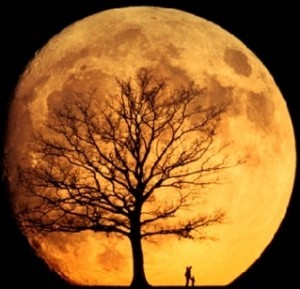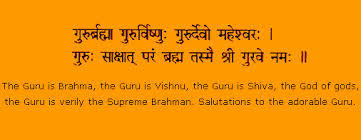As I prepared to observe Guru Purnima something clicked. Wow! Guru Purnima is observed by the entire Dharmic community - Buddhists, Hindus, Jains and Sikhs and it also has a strong message of environmental harmony.
It became clear to me that one of the common factors in our traditions is learning wisdom from an enlightend teacher - a Gu - Ru, one who removes darkness of our ignorance. (Gu = darkness or ignorance, Ru = the remover of that darkness).
The Dharmic traditions believe Gurus are an important part of our lives as they help us understand the great Dharma-based Spiritual teachings with roots in the Vedas.
Each one of our traditions has several gurus and guru lineages whose teachings we follow in various ways and we have a special day to honor them! Our parampara calls upon us to honor and pay respect to our Guru (Spiritual Guide) on this day.

Buddhists honor the memory of Buddha who gave His first sermon on this day at Sarnath, Uttar Pradesh, India.
Hindu traditional celebrations vary. In the yogic tradition, Shiva became the first Guru, as he began the transmission of yoga to the Saptarishis. Ved Vyasa, author of Mahabharat, was not only believed to have been born on this day, but also to have started writing the Brahma Sutras on ashadha sudha padyami.
In Jain tradition, Mahavira, the 24th Tirthankara, after attaining Kaivalya, made Indrabhuti Gautam, later known as Gautam Swami, a Ganadhara, his first disciple, thus becoming a Guru himself.
Sikhs honor the Ten Gurus of Sikhism and the Guru Granth Sahib, the Sikh holy book as the eleventh perpetual guru of the Sikhs.
I wondered why on this day? Why does Guru Purnima fall on the day of full moon, Purnima, in the month of Ashadh (June-July) of the Lunar calendar.

I learnt our tradition is implicitly connected with the environment and with the natural seasonal change. This was the start of the rainy season in which travel was difficult. (Traditionally Gurus traveled, remained unattached as they moved from place to place teaching).
However, for four months - Chaturmas - the Gurus did not travel. They stayed in one place and taught the people of that community. So the community started this period by honoring the Guru and settling to learn from him/her.
The dictates of the natural seasons of Mother Earth guided our Gurus and the communities. Now, many of us hope our communities will honor the teachings from the ancient times and sustain Mother Earth by taking steps to reduce our carbon footprint and develop EcoDharmic conservation habits.
We at HASC are celebrating Guru Purnima through a historic partnership with EPA's ENERGY STAR® program. Our tradition shows our environmental leadership potential which, if harnessed, can influence global climate change policies. Given the ancient intrinsic harmony in our collective Dharmic traditions, surely we can achieve our values of conservation and energy efficiency through our temples and devotees. Could our youth be mobilized to accelerate this effort exponentially?
On this auspicious day of Guru Purnima, as we honor our Spiritual guides, and thank the great Vedic Gurus who from ancient times have held a light to remove the darkness of our ignorance, we urge all to remember the environmental harmony in which our traditions coexisted and celebrated. We hope our Gurus teachings will guide us to become environmental stewards for generations to come.
